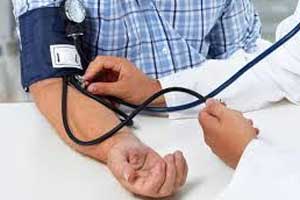- Home
- Editorial
- News
- Practice Guidelines
- Anesthesiology Guidelines
- Cancer Guidelines
- Cardiac Sciences Guidelines
- Critical Care Guidelines
- Dentistry Guidelines
- Dermatology Guidelines
- Diabetes and Endo Guidelines
- Diagnostics Guidelines
- ENT Guidelines
- Featured Practice Guidelines
- Gastroenterology Guidelines
- Geriatrics Guidelines
- Medicine Guidelines
- Nephrology Guidelines
- Neurosciences Guidelines
- Obs and Gynae Guidelines
- Ophthalmology Guidelines
- Orthopaedics Guidelines
- Paediatrics Guidelines
- Psychiatry Guidelines
- Pulmonology Guidelines
- Radiology Guidelines
- Surgery Guidelines
- Urology Guidelines
Large population in India has both high BP and high blood sugar, finds new study

Delhi: A large population of India suffers from both high blood sugar and high blood pressure (BP), finds a recent study.
The study, published in the Journal of Hypertension, emphasize the need for integrative interventions to reduce cardiovascular risk.
C. Anne Bischops, Heidelberg Institute of Global Health, Heidelberg University, Heidelberg, Germany, and colleagues determined the prevalence of having high blood glucose and high blood pressure in India and its variation among states and population groups to inform integrated, person-centered interventions.
For the purpose, the researchers pooled data from three large household surveys which were carried out between 2012 and 2016 and included adults aged at least 15 years. The prevalence of having a concurrently raised blood glucose and BP (comorbid) were age-standardized to India's national population structure and disaggregated by sex, age group, BMI group, rural-urban residency, household wealth quintile, education, state, and region.
Raised blood glucose was defined as having plasma glucose reading at least 126 mg/dl if fasted and at least 200 mg/dl if not fasted, and raised BP as an SBP of at least 140 mmHg or DBP of at least 90 mmHg.
Also Read: Blood sugar levels in children increase on long-time exposure to air pollution, finds study
Key findings of the study include:
- The age-standardized prevalence of this comorbidity was 1.5% and varied by a factor of 8.3 between states.
- Among those aged at least 50 years, 4.5% with a BMI less than 23.0 kg/m and 16.1% with a BMI of at least 30 kg/m were comorbid.
- Age, BMI, household wealth quintile, male sex, and urban location were all positively associated with this comorbidity.
Also Read: Ertugliflozin effective for BP reduction in patients with type 2 diabetes
"Our results identified large variation among states, age groups and rural-urban residency that can help in health system planning and targeting interventions programs for those in need," concluded the authors.
To read the complete study log on to doi: 10.1097/HJH.0000000000002114

Disclaimer: This site is primarily intended for healthcare professionals. Any content/information on this website does not replace the advice of medical and/or health professionals and should not be construed as medical/diagnostic advice/endorsement or prescription. Use of this site is subject to our terms of use, privacy policy, advertisement policy. © 2020 Minerva Medical Treatment Pvt Ltd